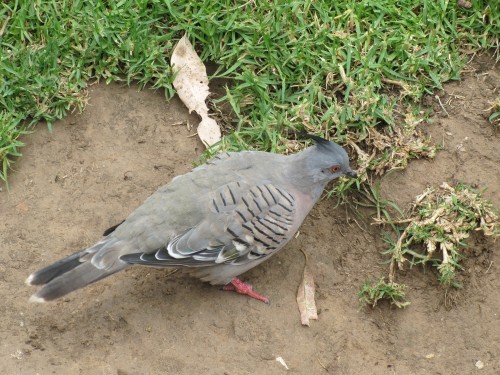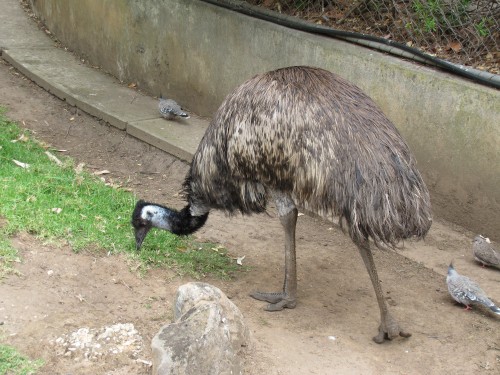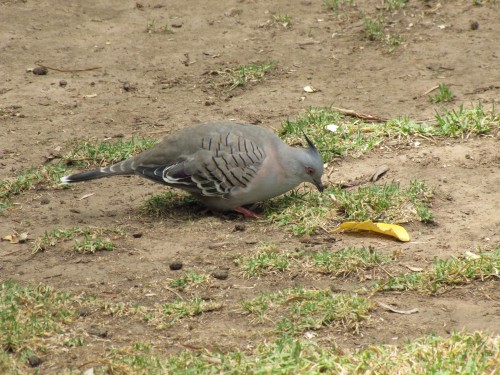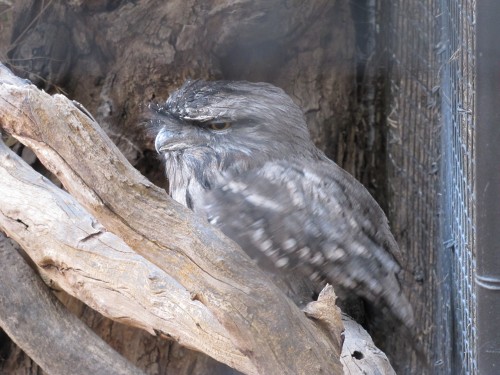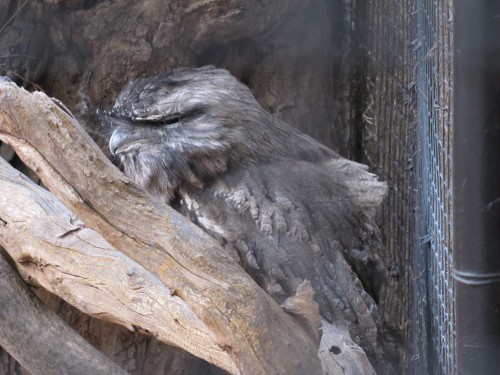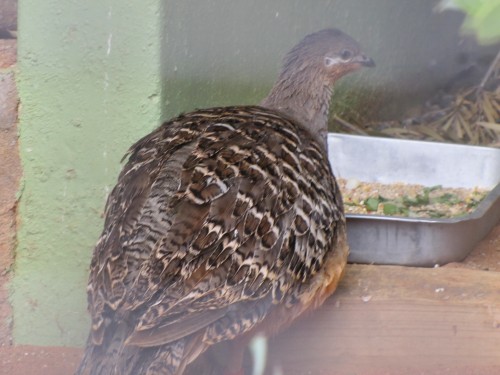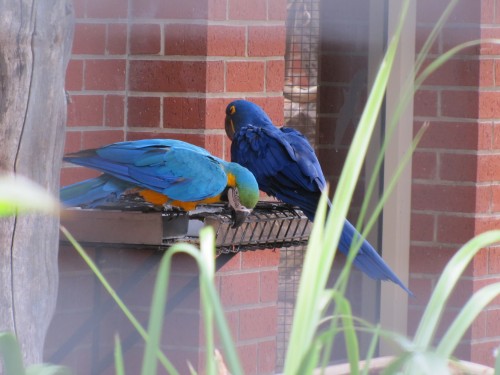Crested Pigeons, Adelaide Zoo
Adelaide Zoo has an excellent collection of birds, both Australian and non-Australian birds. In addition to those kept in aviaries, there is a thriving population of local birds which come in to feed in the animal enclosures.
Crested Pigeons are in evidence everywhere and on this occasion I managed a few good shots of some. This is generally very easy for they move quite unafraid amongst the zoo visitors. Those shown on today’s photos were feeding in the Emu enclosure, along with a few Spotted Turtledoves for good measure.
Tawny Frogmouth, Adelaide Zoo
The nocturnal bird called the Tawny Frogmouth is one of my favourite birds. Ever since we saw one in a tree above our tent near Lake Hattah in north west Victoria many years ago, this species has had a special place in our lives.
Being nocturnal, it is not a bird seen all that often. It is more commonly heard calling at night. From time to time we have one in our garden. One has even banged against our sliding glass door whilst catching a moth fluttering there.
Finding them in broad daylight is a challenge. They are usually well camouflaged perched on the limb of a tree, their feathers blending in with the colours and markings of the branch. When smaller birds – such as honeyeaters – become aware of the presence of a frogmouth or an owl for that matter, they set up quite a fuss, drawing attention to the roosting bird.
The bird shown in today’s photos is a captive bird, part of the excellent collection of birds of the Adelaide Zoo in South Australia.
130 Years achieved for Adelaide Zoo
Adelaide Zoo in South Australia is celebrating its 130th birthday today.
This is a wonderful achievement, showing a commitment on the part of South Australians to keep this wonderful establishment going. I should admit here that am a long time Life Member of the Zoo, and visit as much as I can during the year. I am a member because I firmly believe in what the zoo is doing in preserving endangered species. Not only do they have an active breeding programme for such species, there have been a number of recent examples of zoo animals being released into wild populations to boost numbers in the natural environment.
One thing that keeps me returning regularly to visit is the excellent collection of birds. I’ve frequently photographed many of the birds in their collection and featured them here on this site. You can read these articles and see the photos by trolling through my Archives (see link above) or going to the categories on the side bar and clicking on “Adelaide Zoo” or “zoos“.
Meanwhile, below are some bird photos I have taken there recently.
Malleefowl in the Adelaide Zoo
The Malleefowl, a turkey-sized mound building bird of the drier parts of Australia, is a widespread but uncommon bird living in the region where I live. It is primarily a ground dwelling bird, feeding mainly on seeds. The male makes a large 2 to 3 metre wide mound of sand and vegetation like leaves, grass, bark and so on which acts like a compost heap.
The rotting vegetation develops heat which incubates the eggs the female lays and buries in the mound. The male works the mound daily during the summer months, adding or removing soil to regulate the temperature in the egg chamber. Not surprisingly, this bird is also known as the Incubator Bird. In all my years of birding I have only seen about a dozen of this species, but amazingly, I saw 6 in a one hour period.
The bird in the photo above is a captive bird in the Adelaide Zoo.
Macaws in the Adelaide Zoo
My home zoo is Adelaide Zoo, along with Monarto Zoo which is a ten minute drive from home. One of the strengths of Adelaide Zoo is its bird collection, mostly of Australian birds.
The zoo also boasts a good collection of non-Australian birds, including several macaw species such as those shown in the photo above. The bird on the left is a Blue and Gold Macaw, while the other is an Hyacinth Macaw. Both of these spectacular parrots are native to South America.
